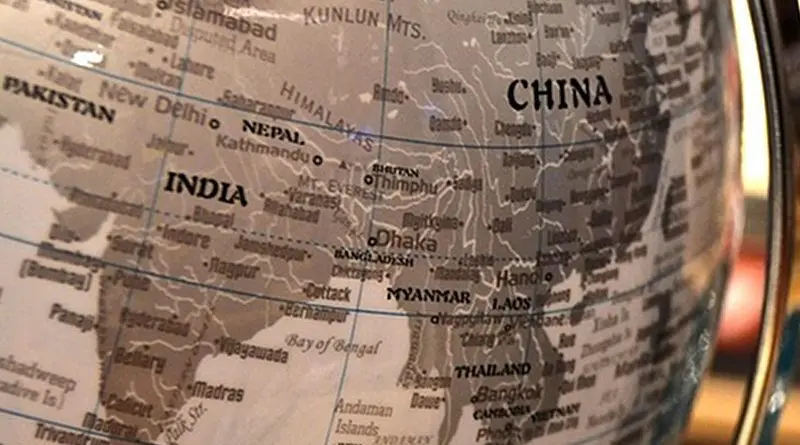Imagining Arms Control In South Asia – OpEd
As it appears, the New START (Strategic Arms Reduction Treaty) is very likely to expire in February this year. Trump administration’s refusal to extend the New START treaty citing Chinese inclusion in an arms control regime has opened a Pandora box.
Although the Biden administration seems quite open to the extension of New START, the debate to include China in strategic arms control agreement however would become more contentious when the five-year extension period ends. In light of these developments, two hypotheses were developed.
First, the United States would engage China and convince it to become a party to a strategic arms control regime. Second, with no strategic arms control agreement in place, an arms race would commence. Both of these scenarios are sure to have a massive impact on the strategic stability of the South Asian region. Most significantly, further elaboration is required to access the impact of the first hypothesis.
The question that arises is how the United States can convince China to become part of an arms control agreement. How can the U.S address the security dilemma faced by China? It is easier to address Chinese insecurity in pacific theater as no regional adversary possesses nuclear weapons and China has developed considerable defensive capabilities. These can offset U.S conventional forces with a provision of credible anti-access/area denial capability.
However, India not only shares land borders but has territorial disputes with China and possesses nuclear weapons. In the last few years, the border skirmishes have increased. Furthermore, the U.S has developed a strategic partnership with India to counter the rise of China. This partnership includes multiple defense agreements and a civilian nuclear deal among other initiatives.
India which possesses nuclear weapons and is increasing its nuclear capabilities at a rapid pace is not part of the non-proliferation treaty (NPT) and remains outside the remit of any inspection and regulations by the International Atomic Energy Agency (IAEA). It would be next to impossible for the U.S to convince China to become part of the arms control regime while India possesses nuclear weapons and there is no administrative mechanism for check and balance with regards to the Indian nuclear program.
The only way to address the Chinese security dilemma vis-à-vis India’s offensive nuclear capabilities is to include the latter into a similar arms control regime. But that’s a problem. For any such development, India first would be required to become a signatory to NPT. If this happens India would join the exclusive club of the five recognized nuclear-weapon states. Once part of the international non-proliferation regime, the next step would be to include India in an arms control agreement that can satisfy the Chinese security dilemma.
Well if that becomes the case and India becomes part of the international non-proliferation regime where would it leave Pakistan? We have to scale back a bit to wrap this. If India is accorded a chance to become part of the NPT while retaining its nuclear weapons, how would Pakistan be treated when Pakistan only developed its nuclear capability to counter India’s nuclear program and other security threats? Pakistan’s nuclear posture is of ‘full spectrum deterrence’ within the broader ambit of ‘credible minimum deterrence’ against India.
There are two ways Pakistan’s concerns can be addressed. One is to offer Pakistan a similar pathway to India. Pakistan can be asked to become a signatory to NPT and an arms control regime for South Asia can be agreed upon. If Pakistan is not offered the same pathway, it would mean making Pakistan a pariah state in South Asia. Well, option one would mean the establishment of an arms control regime in South Asia and the option two will represent no arms control regime.
Without Pakistan, an arms control agreement in South Asia is not possible. India would not agree to open its nuclear program to inspection and regulation while Pakistan remains outside the non-proliferation regime and is not under constraint by arms control agreement. Similarly, how would the U.S convince China to allow Indian entry into the nuclear community when Pakistan, a close strategic ally of China is not offered the same opportunity? The question of how Pakistan would respond at the conventional and strategic level would become more significant. Specifically, when it is not a part of the international non-proliferation regime while India is treated differently. Although it can be assessed that this would likely undermine the Chinese interests if Pakistan is kept out at the expense of India. The prospects of this seem very unlikely that the Chinese policymakers would ever agree to that but if in case it happens it might change the Pak-China strategic relations. Just to be clear this scenario seems next to impossible considering the strategic and historic partnership between Pakistan and China.
Hence, this debate to include China into the strategic arms control regime by the Trump administration has opened multiple scenarios for analysis. The Biden administration might not indulge in the same practice of emphasizing the Chinese inclusion as a prerequisite for a new agreement or extension of the New START. Likewise, any arms control agreement between the U.S and China would not be possible without addressing the future of South Asian strategic stability. It rests on creating an agreement that can incorporate and address the security dilemma faced by both the South Asian adversaries.
*Khawaja Dawood Tariq is a Senior Research Fellow/ Editor at Strategic Vision Institute (SVI).


important word here is “imagining”!!